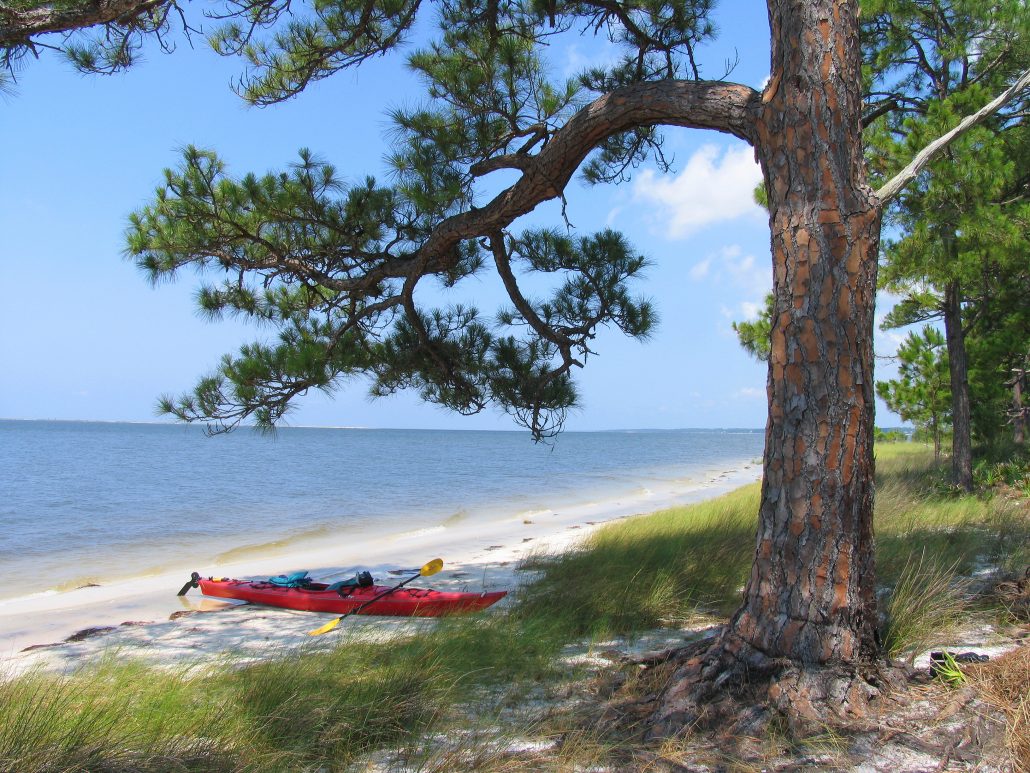By Doug Alderson
The first thing to know about paddling the 1,515-mile Florida Circumnavigational Saltwater Paddling Trail is that it’s not easy. Bugs, storms, high winds and waves can all be encountered along the journey. Then there are the sore muscles, sunburn and salt and sand that seems to get into everything.
“This trip is an incredible challenge,” said Mary Mangiapia, who took just over three months to complete the trail in 2014. “Along the way, I have encountered 10-foot seas and numerous storms. I even cracked a Kevlar bulkhead while crossing Tampa Bay in big waves, and I also have teeth marks in my kayak from a bull shark.”
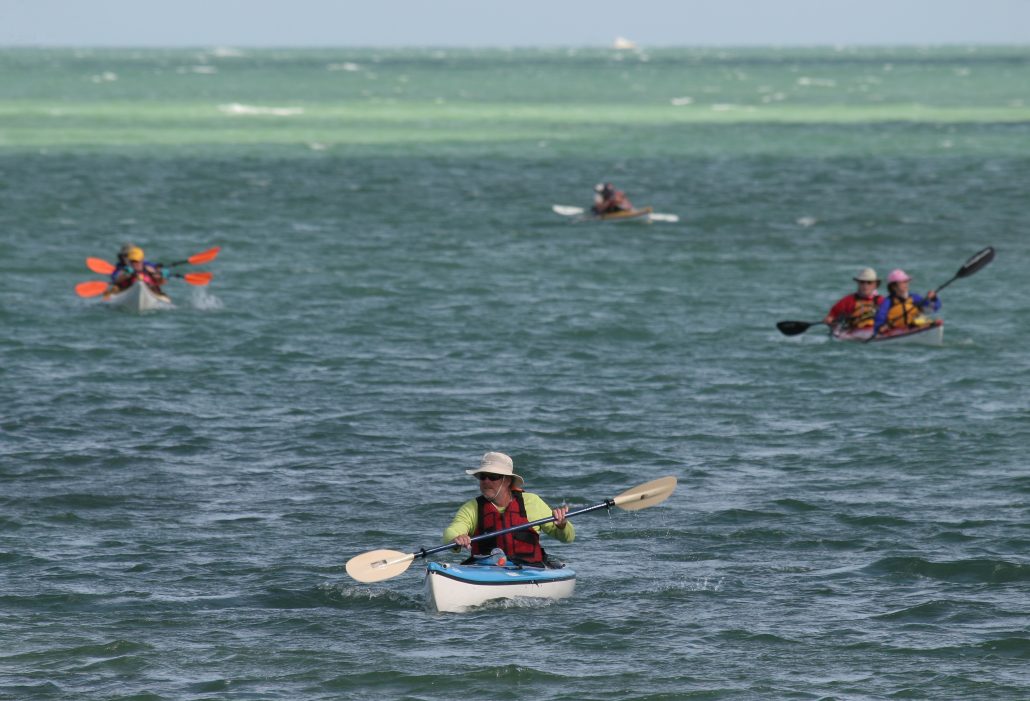
So, why do it? The reasons given by those who have completed the trail, a group known as “thru-paddlers,” are many.
Besides her trip’s challenges, Mary Mangiapia becomes philosophic. “Completing the trip and doing a large part of it solo helped me feel more confident in myself and my abilities. I found great peace being in nature and in living by the rhythms of the winds and tides. That has carried on well beyond the trip.
“I saw lots of wildlife, and I treasure the memory of dolphins escorting me through a storm. I met kind people from all walks of life who helped me along the way and I am still friends with many of them. Even though I am a Florida native and have lived here my whole life, the trip allowed me to see areas of the state that I would have never seen otherwise.”
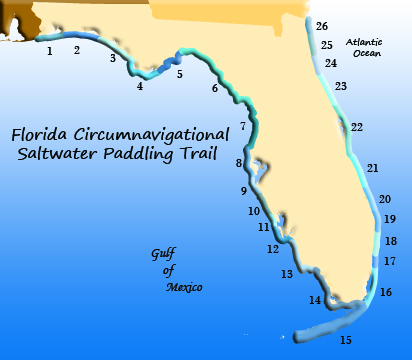
Matt Keene landed at Big Lagoon State Park in early 2008 after almost four months of paddling, becoming the first person to complete the entire trail. “As you progress in your journey, your needs become simplified, and with that comes a simpler view of living your life,” he said. “You shed the weight of civilization- the stress, the doubt, the body fat… Your confidence rises, and you learn to live day by day.”
Jodi Eller, who completed the trail in segments over several years, added, “The trail is amazing. It goes through so many different ecosystems. How the beaches change along the trail is just incredible. The trail made me a stronger paddler and it also redefined who I am in a way, bringing me back to the essence of being human. It’s a powerful experience to go through.”
The different adventurers were the type of long-distance users that David Gluckman envisioned when he conceived the idea of the Circumnavigational Trail in the mid-1980s. The environmental lobbyist was inspired by the success of the 350-mile Maine Islands Trail network. In 2004, the state of Florida pursued Gluckman’s dream, based in part on the successful completion of the 105-mile Big Bend Saltwater Paddling Trail from the Aucilla River to the town of Suwannee by the Florida Fish and Wildlife Conservation Commission. The Florida Department of Environmental Protection’s Office of Greenways and Trails, part of the Florida Park Service, began scouting and mapping the Circumnavigational Trail, and by the end of 2007, most of it was complete.
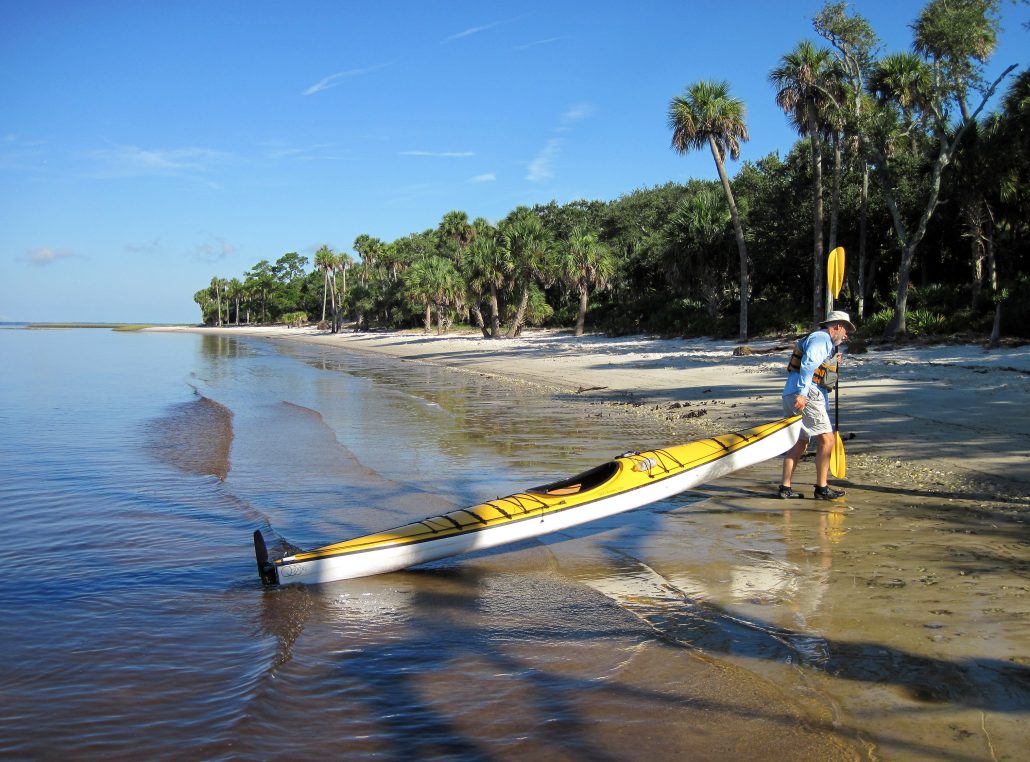
To date, 29 hardy adventurers have completed the entire Circumnavigational Trail with thousands more doing shorter segments. Some paddle the trail in one paddling season, taking three to four months, while others tackle it in segments over several years. “Spending time in nature is a great way to balance our lives and humble ourselves,” said Sean Bowers, who paddled the entire trail in segments over two years. “You do not have to go as extreme as embarking on a journey that lasts for months to realize the benefits. Spending an occasional Sunday afternoon is enough to keep feeling free and refreshed. There are tens of thousands of amazing areas to explore along the waterways of Florida.”
In all, the Circumnavigational Trail utilizes more than 80 primitive campsites, some on remote islands and in state and national parks. Motels and public and private campgrounds are featured for other overnight stops. Points-of-interest include lighthouses, Indian temple mounds, and museums. Access points for the trail number in the hundreds, and restaurants and re-supply opportunities abound as well. Plus, long-distance paddlers can utilize a “trail angel network” of 41 volunteers organized by the Florida Paddling Trails Association. A trail angel usually lives near the trail and can help a paddler with resupplying food or by offering a hot shower or a place to stay.
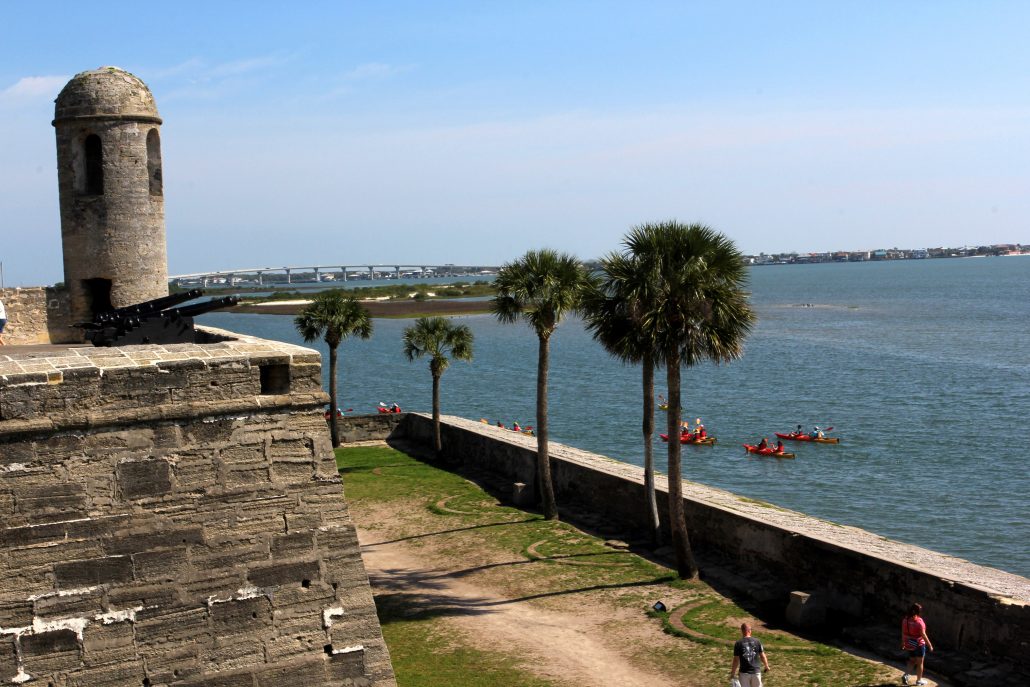
The trail encompasses every Florida coastal habitat type, from barrier island dune systems to salt marsh to mangroves. It includes iconic saltwater environments such as the Big Bend Coast, Ten Thousand Islands and Everglades, Florida Keys, Biscayne Bay and Indian River Lagoon. Marine life includes manatees, dolphins, American crocodiles, alligators, sea turtles and a host of fish, rays and crabs. Bird life ranges from bald eagles to brightly-colored warblers.
“Paddling the trail is the best way to experience Florida’s coast,” said Florida State Parks Director Eric Draper, “So we are pleased that our coastal state parks are part of the trail. State parks protect unique landscapes and historic sites and offer convenient campgrounds for paddlers. We’re committed to the long-term success of the Circumnavigational Trail.”
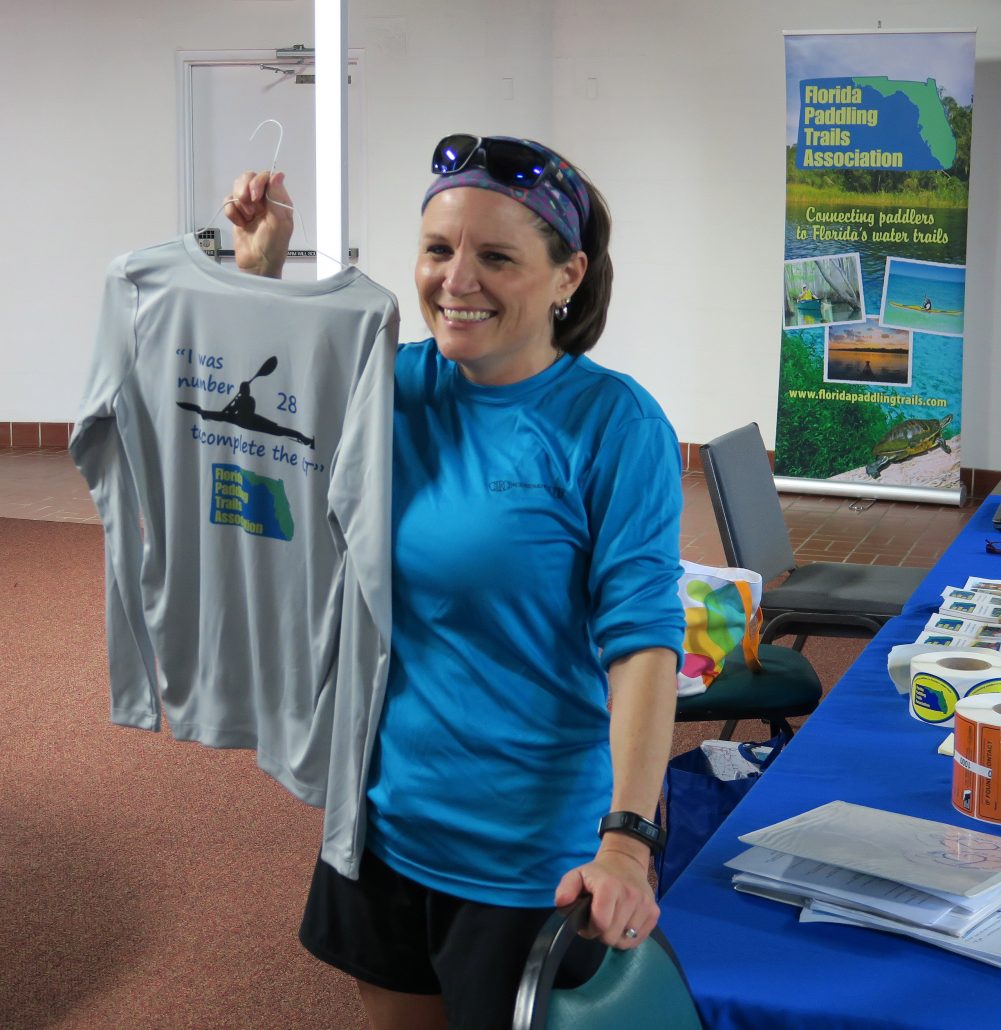
To learn more about the Florida Circumnavigational Saltwater Paddling Trail, and to download free maps and trails guides, log onto www.floridagreenwaysandtrails.com.
Doug Alderson mapped the Circumnavigational Trail from 2004 to 2007 and he is the current Assistant Bureau Chief for the Office of Greenways and Trails. He is also an award-winning author of several published outdoor books and magazine articles (www.dougalderson.net).


